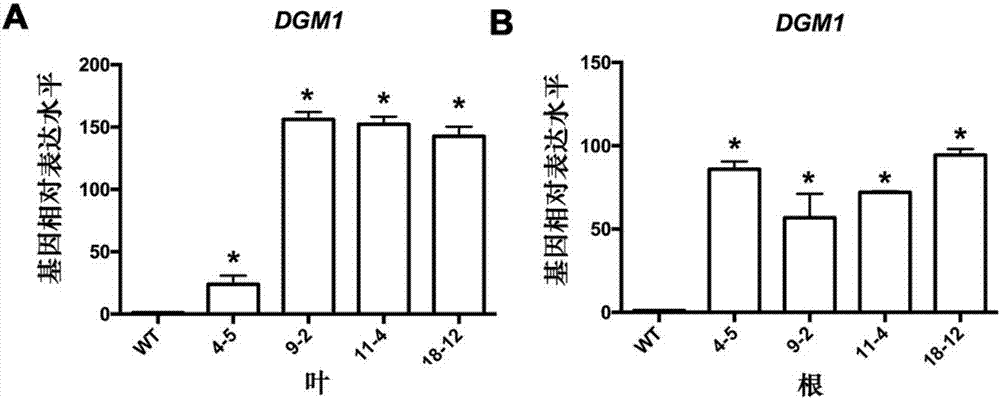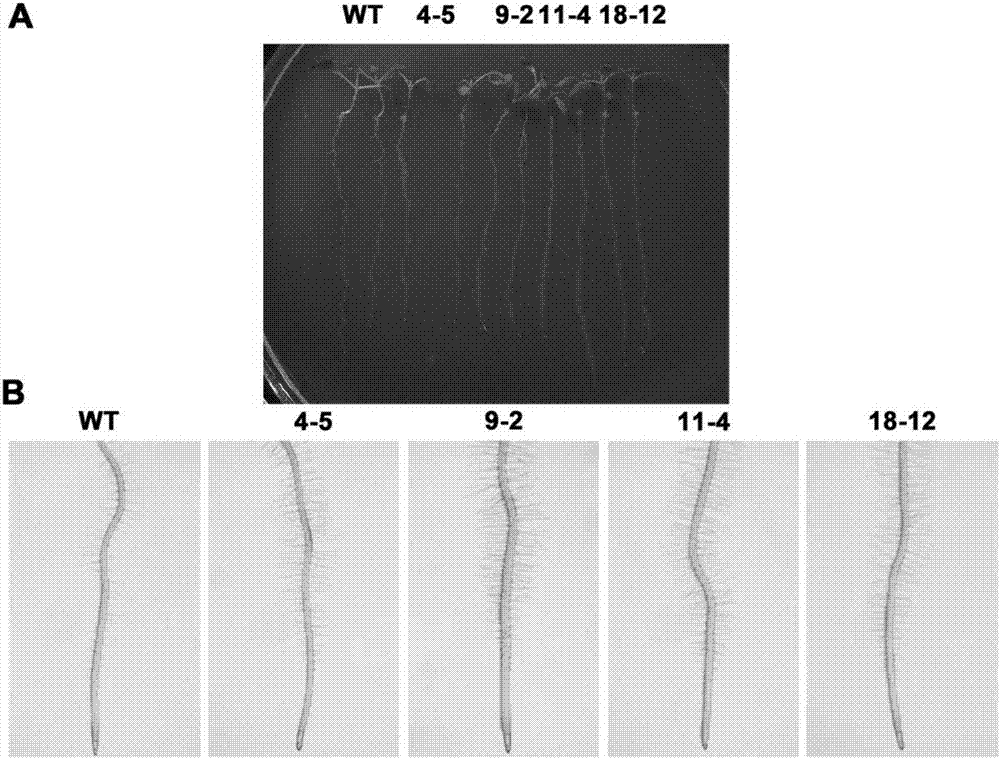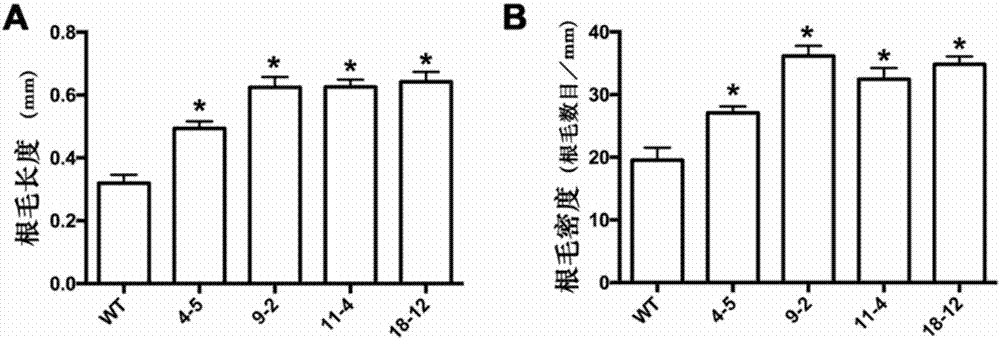Application of DGM1 protein in improving generation capacity of plant root hairs
A technology that generates 1. DGM1, applied in applications, plant peptides, plant products, etc., can solve problems such as unclear molecular mechanisms, achieve small risks, and improve the effect of root hair length and density
- Summary
- Abstract
- Description
- Claims
- Application Information
AI Technical Summary
Problems solved by technology
Method used
Image
Examples
Embodiment 1
[0050] Example 1, the acquisition of AtDGM1 gene and its functional verification
Embodiment approach
[0051] In order to identify important genes involved in the regulation of plant root hair development, the inventors of the present invention conducted screening of Arabidopsis mutants with abnormal root hairs. A mutant hps5 with increased root hair formation under normal conditions was obtained by screening the mutant library of Arabidopsis thaliana seeds. Gene cloning revealed that HPS5 encodes the ethylene receptor ERS1. Through the comparative analysis of the transcriptomes of hps5 and the ethylene-insensitive mutant ein3, etc., the inventors identified a series of target genes involved in root hair development downstream of ethylene, and proved that EIN3 can directly bind to the promoters of these root hair-related genes Above all, the expression levels of these target genes were increased, thereby increasing the formation of root hairs. Most of these genes encode cell wall proteins, cell wall modifying enzymes, proton pumps, jasmonic acid signaling and synthesis-related...
PUM
 Login to View More
Login to View More Abstract
Description
Claims
Application Information
 Login to View More
Login to View More - R&D
- Intellectual Property
- Life Sciences
- Materials
- Tech Scout
- Unparalleled Data Quality
- Higher Quality Content
- 60% Fewer Hallucinations
Browse by: Latest US Patents, China's latest patents, Technical Efficacy Thesaurus, Application Domain, Technology Topic, Popular Technical Reports.
© 2025 PatSnap. All rights reserved.Legal|Privacy policy|Modern Slavery Act Transparency Statement|Sitemap|About US| Contact US: help@patsnap.com



